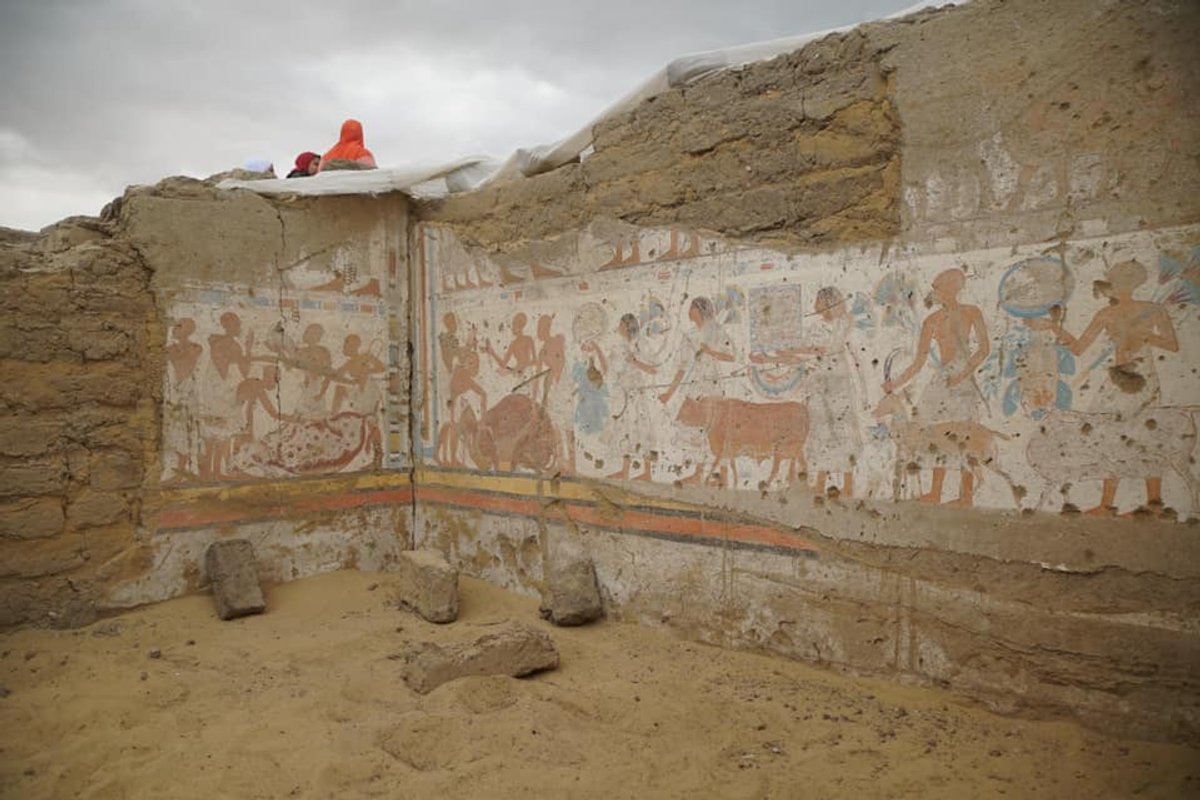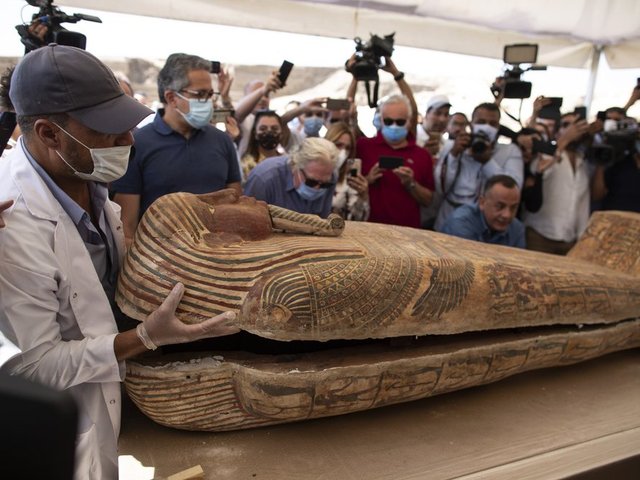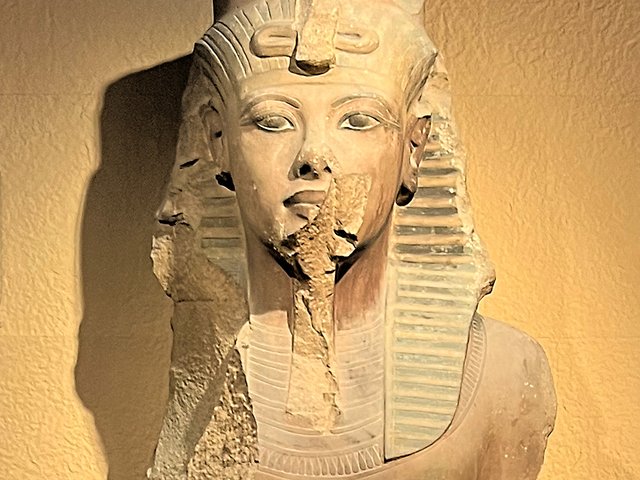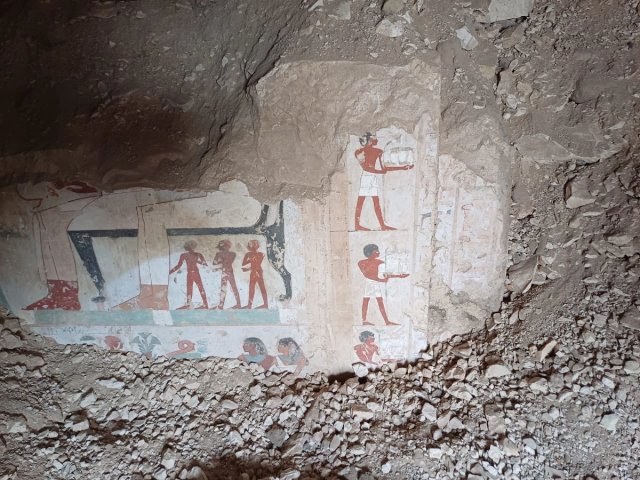Archaeologists excavating at Saqqara, an ancient necropolis just south of Cairo in Egypt, have unearthed the tomb of a royal treasurer from the time of King Ramesses II, who reigned from around 1279 to 1212 BC. The tomb walls bear painted scenes of men bringing animals as offerings for the deceased, the slaughter of animals, and carvings of the tomb owner himself, a man named Ptahemwia.
The archaeological team from Cairo University report that the tomb’s design is similar to an ancient temple, but so far, only the entrance area has been excavated. Hieroglyphic inscriptions relate that, in addition to being a royal treasurer, Ptahemwia served as a royal scribe, a supervisor of cattle, and was responsible for the divine offerings at a temple of Ramesses II in Thebes (modern Luxor).
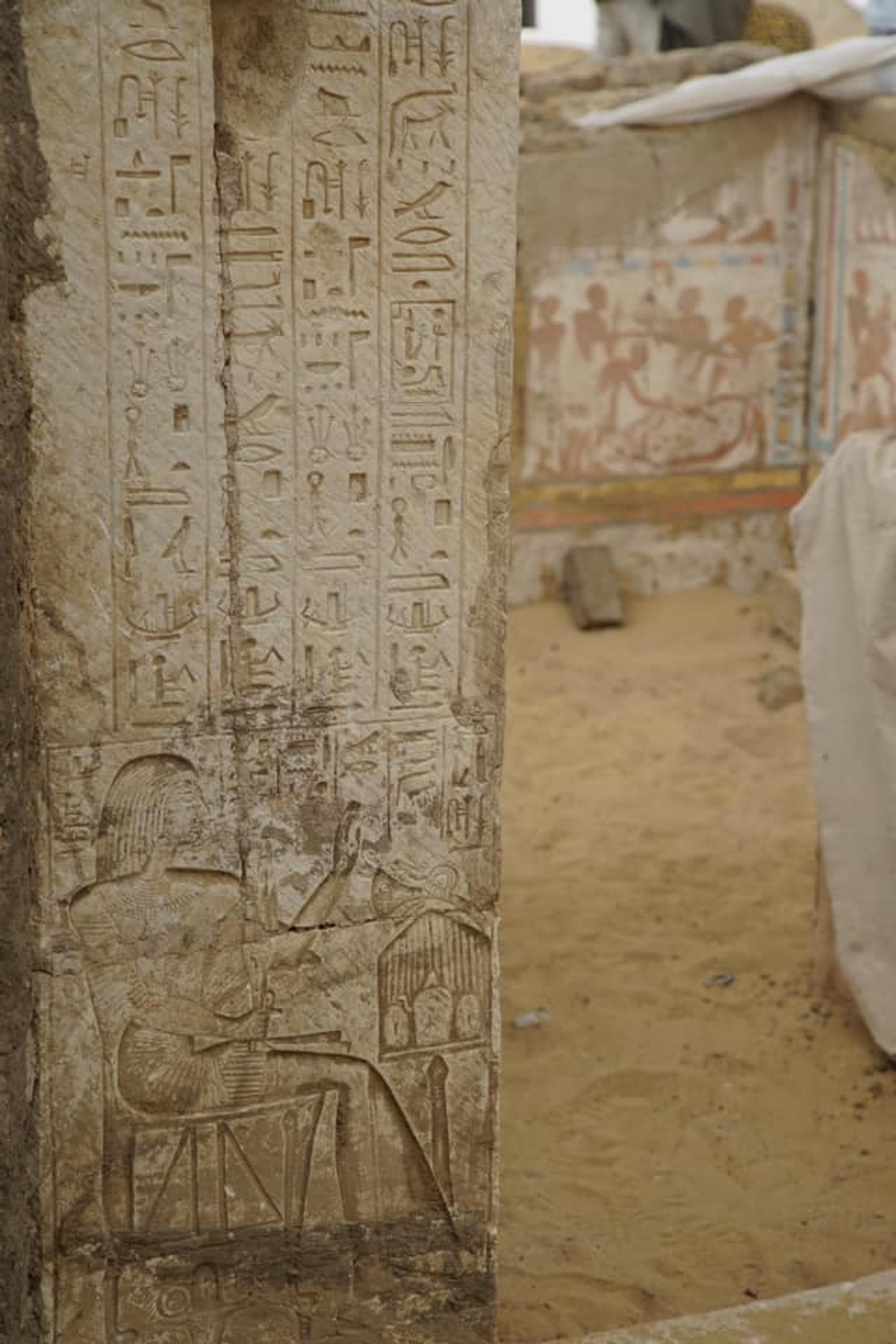
© Ministry of Tourism and Antiquities/Facebook
“Given the important economic role of the temple, this would have been a prestigious function—regulating the huge amounts of food that went in and out of the temple—hence why he could afford a fine tomb at this desirable part of the Saqqara necropolis,” says Campbell Price, the curator of Egypt and Sudan at the Manchester Museum, who was a member of a team that conducted a geophysical survey at Saqqara in 2009.
The archaeologists excavated Ptahemwia’s tomb in a sector of Saqqara where elite Egyptians were buried during the 18th and 19th Dynasties (roughly 1549 to 1187 BC), reflecting Ptahemwia’s high status at court. A military general named Horemheb, who rose to become pharaoh later in his career, also built his tomb in this area, but had a new tomb constructed at the Valley of the Kings in Thebes after ascending to the throne.
“Ptahemwia was known from various architectural chunks from his tomb that had been seen at, or recorded as coming from, Saqqara in the 19th century,” Price says. “Also, a statue belonging to a man with his name and titles was found at Abydos in 1902 (now in National Museums Scotland in Edinburgh), so we know he was an important chap.”
Ptahemwia’s tomb is the latest big discovery at Saqqara, which has recently received a great deal of archaeological and media attention. Last year, archaeologists found over 100 painted coffins and other artefacts in three burial shafts at the site, a find announced by Mostafa Waziry, the secretary general of Egypt’s Supreme Council of Antiquities, as “the biggest discovery in 2020.”


